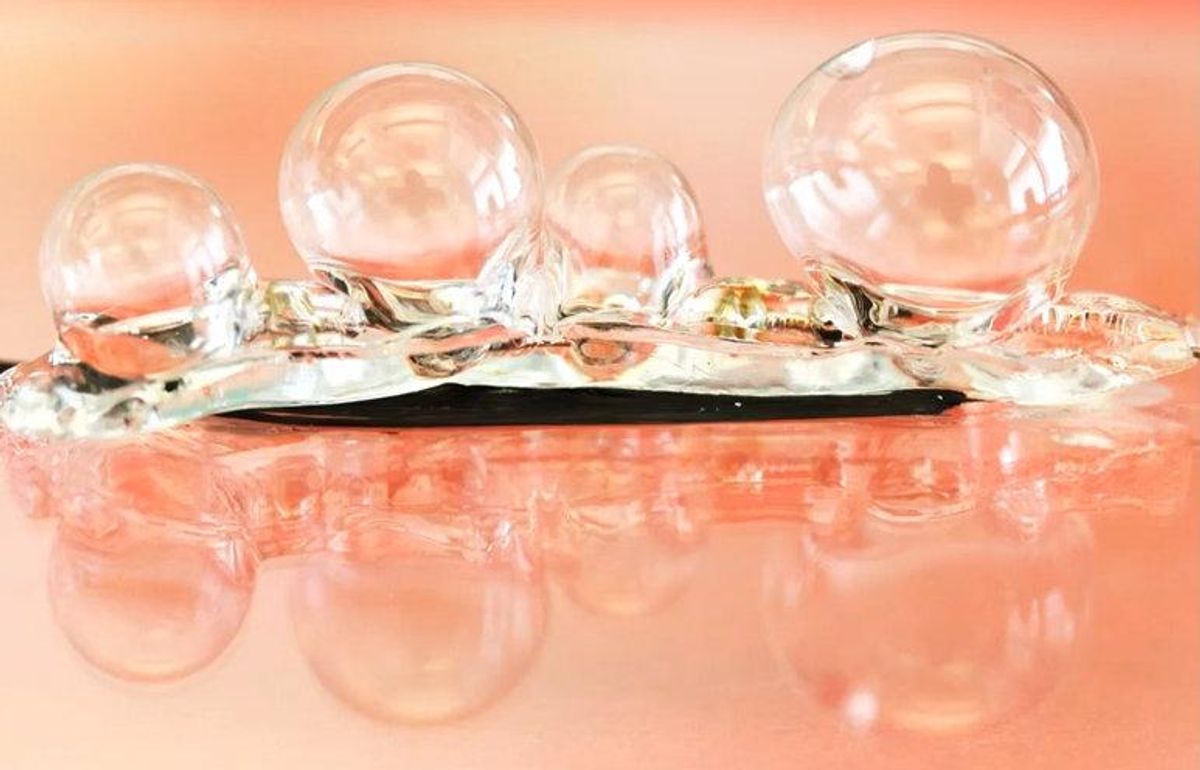Video Friday is your weekly selection of awesome robotics videos, collected by your friends at IEEE Spectrum robotics. We also post a weekly calendar of upcoming robotics events for the next few months. Please send us your events for inclusion.
CoRL 2022: 14–18 December 2022, AUCKLAND, NEW ZEALAND
ICRA 2023: 29 May–2 June 2023, LONDON
RoboCup 2023: 4–10 July 2023, BORDEAUX, FRANCE
RSS 2023: 10–14 July 2023, DAEGU, KOREA
IEEE RO-MAN 2023: 28–31 August 2023, BUSAN, KOREA
Enjoy today’s videos!
Liquid metal and hydrogel combine to make a soft, inflatable actuator that runs entirely on electricity without relying on external pumps.
Happy 10th anniversary to Jamie Paik’s Reconfigurable Robotics Lab at EPFL!
[ RRL ]
The manufacturing industry (largely) welcomed artificial intelligence with open arms. Less of the dull, dirty, and dangerous? Say no more. Planning for mechanical assemblies still requires more than scratching out some sketches, of course - it’s a complex conundrum that means dealing with arbitrary 3D shapes and highly constrained motion required for real-world assemblies.
In a quest to ease some of said burdens, researchers from MIT’s Computer Science and Artificial Intelligence Laboratory (CSAIL), Autodesk Research, and Texas A&M University came up with a method to automatically assemble products that’s accurate, efficient and generalizable to a wide range of complex real-world assemblies. Their algorithm efficiently determines the order for multi-part assembly, and then searches for a physically realistic motion path for each step.
[ MIT CSAIL ]
Thanks, Rachel!
Xenoforms is an installation work that consists of 3D prints of parametric models, video animations and visualizations, posters with technical diagrams, and a 6-axis 3D printer. In this work, a series of three-dimensional forms have been automatically generated by an artificial system that attempts to identify design decisions for an efficient, sustainable, and durable structure. The work provides a speculative scenario that demonstrates how an autonomous A.I. system follows its own strategies for colonizing the architectural space and as an extension to become a human symbiont.
Xenoforms is a collaboration between Flexiv (and its Rizon arm) and artist Stavros Didakis.
[ Sonicon Lab ] via [ Flexiv ]
Thanks, Noah!
The latest buzz at the University of Maryland? Tiny, autonomous drones that harness the power of artificial intelligence to work together. In this case, the minute robots could one day provide backup to pollinators like honey bees, potentially securing the world’s food crops as these critical insect species face challenges from fungal disease, pesticides and climate change. The project is led by doctoral student Chahat Deep Singh M.E. ’18 of the Perception and Robotics Group, led by Professor Yiannis Aloimonos and Research Scientist Cornelia Fermüller.
[ UMD ]
iRobot has a museum, which is a lot more interesting than you might think, because iRobot spends a very long time making things that are really, really not vacuums. And make sure to look closely at some of the earliest robots, because they in fact predate iRobot itself.
Some of those robots still have “IS Robotics” branding on them, which was the name of the company that Rod Brooks (and his students Colin Angle and Helen Greiner) founded in 1990. It wasn’t called “iRobot” until 2000. IT, in particular, was still part of Brooks’ lab at MIT in the mid-1990s, and was featured on a 1996 episode of “Scientific American Frontiers” which I just found on YouTube. There’s also a clip of Marc Raibert from 1987!
And just a little more of the best stuff from the museum:
[ iRobot ]
The ANYexo 2.0 is our latest prototype based on around two decades of research at the Sensory-Motor Systems Lab and Robotic Systems Lab of ETH Zürich. This video shows uncommented impressions of the main features of ANYexo 2.0 and its performance in range of motion, speed, strength, haptic transparency, and human-robot attachment system.
[ ETH Zurich ]
Here are four of the finalists of this year’s KUKA Innovation Award.
[ KUKA ]
How soft should a robot foot be, anyway?
[ GVLab ]
At ANYbotics, we constantly release exciting new software features and payloads to our customers. The December 2022 update introduces major product developments that make it easier for operators to operate ANYmal, monitor gas leakages, perform high-precision reality capture, attain more insight from thermal measurements, and cover wider areas through new mobility features.
[ ANYbotics ]
Take a tour through our new ABB Robotics mega factory in Shanghai, China and see how we’re bringing the physical and digital worlds together for faster, more resilient and more efficient manufacturing and research.
[ ABB ]
On December 1, 2022, alum UMD Zhen Zeng of JP Morgan AI Research talked to Robotics students as a speaker in the Undergraduate Robotics Pathways & Careers Speaker Series, which aims to answer the question: “What can I do with a robotics degree?”
[ UMich ]
This talk is from Nitin Sanket at WPI, on “AI-Powered Robotic Bees: A Journey Into The Mind And Body!”
The human fascination to mimic ultra-efficient living beings like insects and birds has led to the rise of small autonomous robots. Smaller robots are safer, more agile and are task-distributable as swarms. One might wonder, why do we not have small robots deployed in the wild today? I will present how the world’s first prototype of a RoboBeeHive was built using this philosophy. Finally, I will conclude with a recent theory called Novel Perception that utilizes the statistics of motion fields to tackle various class of problems from navigation and interaction. This method has the potential to be the go-to mathematical formulation for tackling the class of motion-field-based problems in robotics.
[ UPenn ]
Evan Ackerman is a senior editor at IEEE Spectrum. Since 2007, he has written over 6,000 articles on robotics and technology. He has a degree in Martian geology and is excellent at playing bagpipes.



